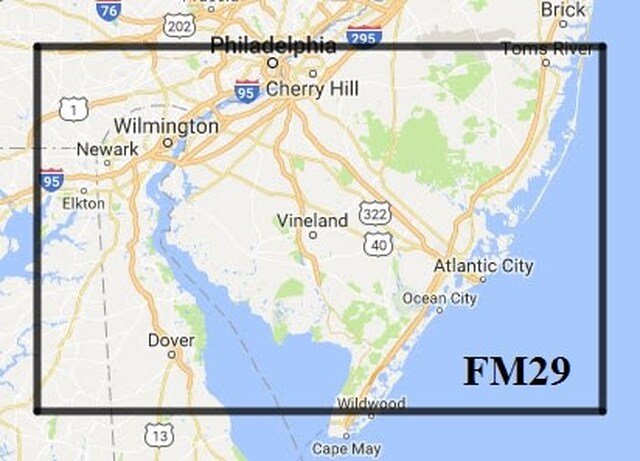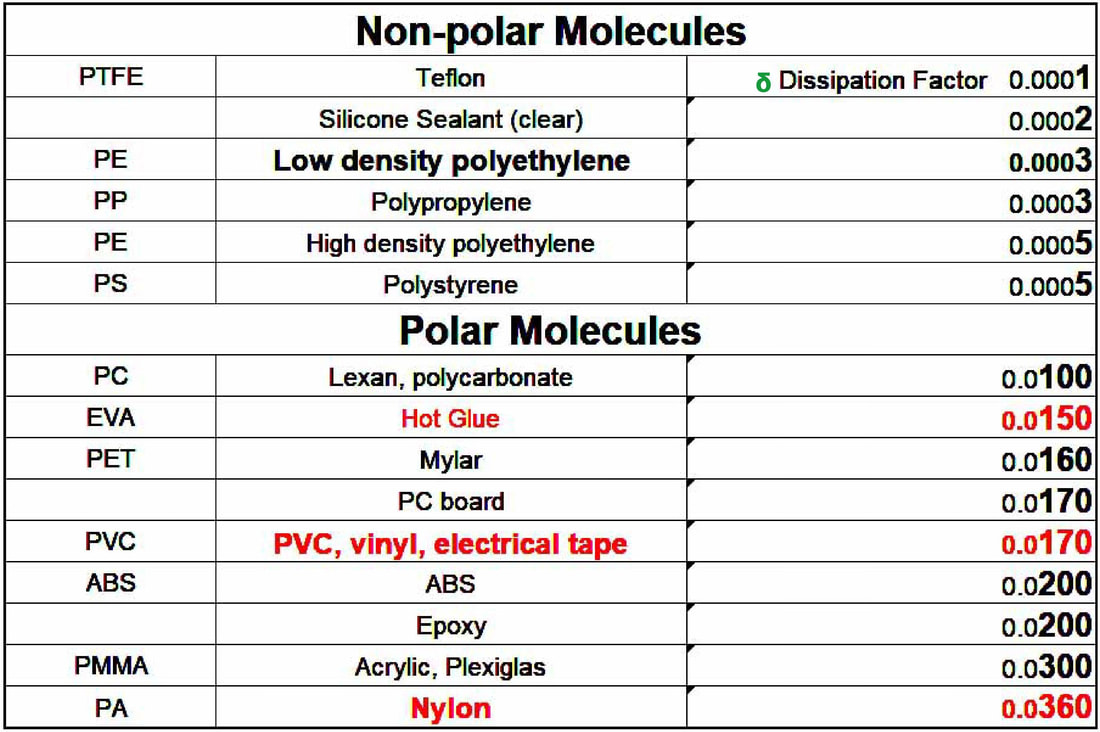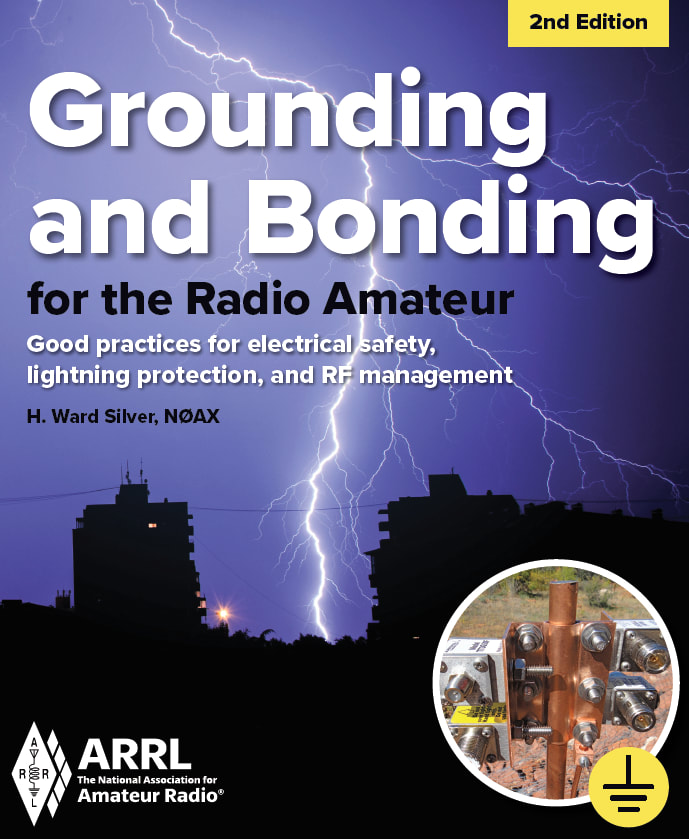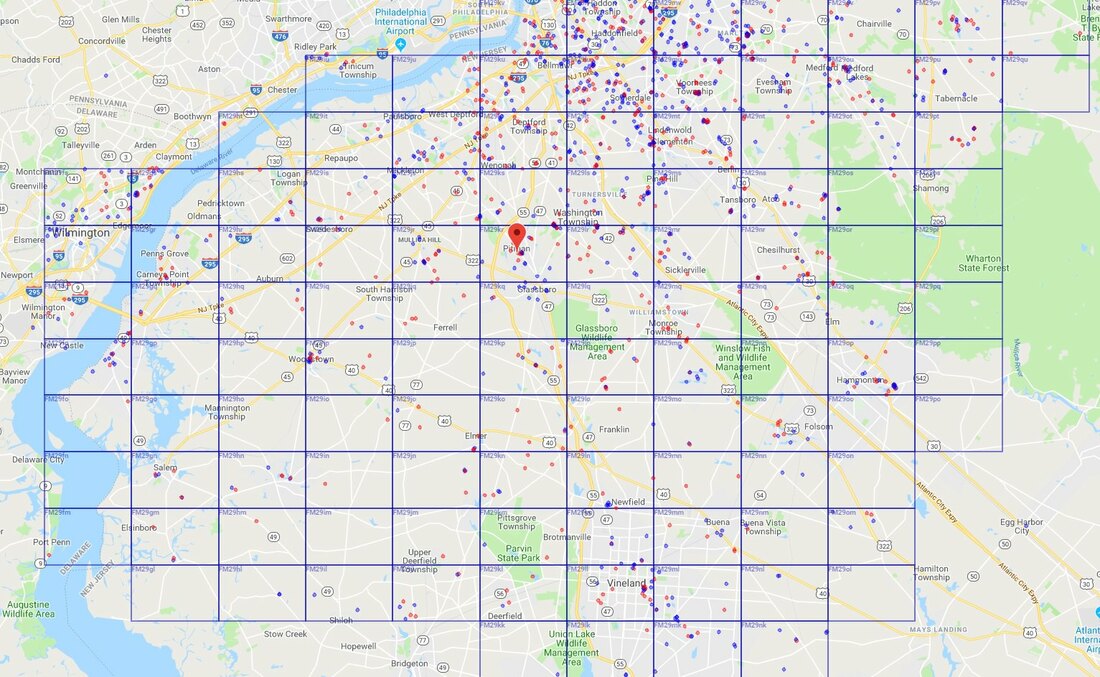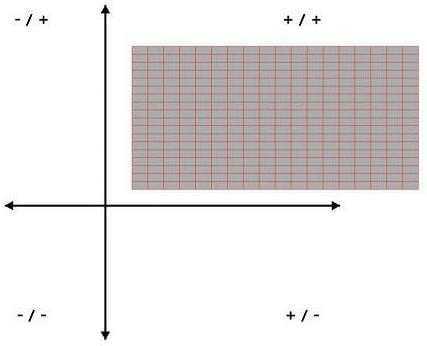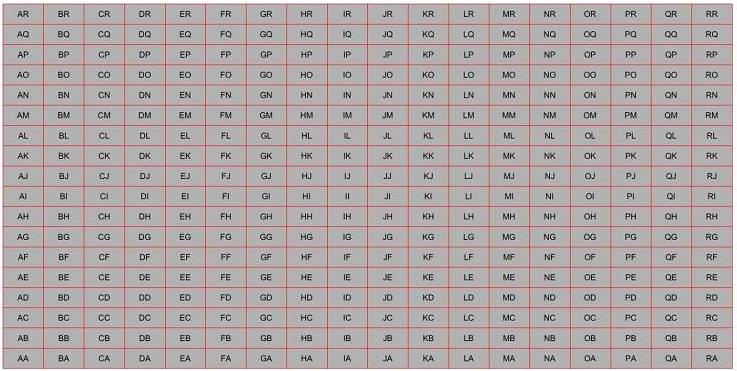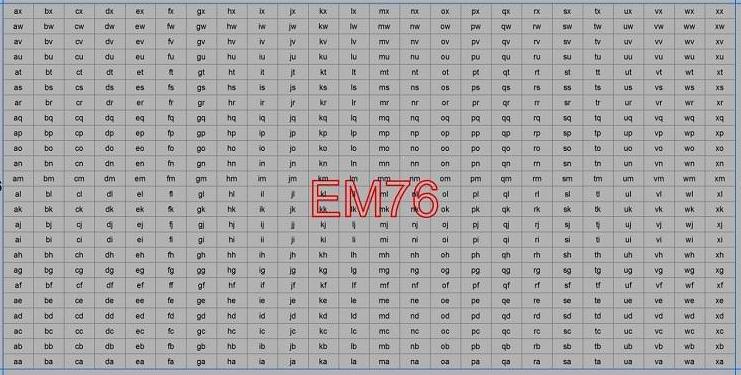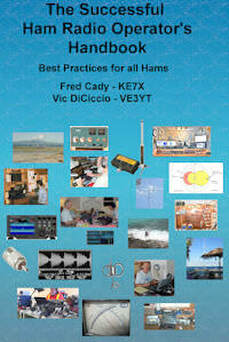The Elmer's Shack
Hints, Tips, Hacks, and Tweaks
This Is All I Know
By Bill Mollenhauer, N2FZ
Certain plastics get hot in the presence of RF. They are POLAR PLASTICS (Polar Molecules). Heat is loss of energy (RF Loss). You want to use NON-POLAR PLASTICS (Non-Polar Molecules) in RF environments like antenna projects.
See W6NBC’s website and download the PDF listed below for more information about this fascinating topic.
Plastics For Ham Radio Projects, a presentation by John Portune, W6NBC
https://w6nbc.com/slides/Plastics%20for%20Ham%20Radio.pdf
By Bill Mollenhauer, N2FZ
Certain plastics get hot in the presence of RF. They are POLAR PLASTICS (Polar Molecules). Heat is loss of energy (RF Loss). You want to use NON-POLAR PLASTICS (Non-Polar Molecules) in RF environments like antenna projects.
See W6NBC’s website and download the PDF listed below for more information about this fascinating topic.
Plastics For Ham Radio Projects, a presentation by John Portune, W6NBC
https://w6nbc.com/slides/Plastics%20for%20Ham%20Radio.pdf
Club Library
By Ron Block, NR2B
Did you know that our Clubhouse has a library? We tried to keep it a secret, but it is just sitting there for all to see. It’s a little (actually, a lot) smaller than the county library; however, it is specifically focused on the things that we do. So, if you need to look something up in the Handbook, the Antenna Book, or some other publication they are there for you.
By Ron Block, NR2B
Did you know that our Clubhouse has a library? We tried to keep it a secret, but it is just sitting there for all to see. It’s a little (actually, a lot) smaller than the county library; however, it is specifically focused on the things that we do. So, if you need to look something up in the Handbook, the Antenna Book, or some other publication they are there for you.
|
New this month is the just published Grounding and Bonding for the Radio Amateur, Second Edition, by H. Ward Silver, N0AX. It contains important topics on ham radio station grounding and bonding :
|
This new edition of Grounding and Bonding for the Radio Amateur shows you how to make sure your station follows the current standards and shows effective grounding and bonding techniques for home stations (including condos and apartments), portable and mobile stations, towers, and outdoor antennas. Be sure to stop by!
New Jersey MVC Vanity Plate Form.PDF
NJ Special Amateur Radio Plates and MVC
By Herb Dyer, KT2Y
A special note for those who have entertained Special Plates with your Call Sign from NJ MVC.
This will be a "jumping though MVC hoops" post so the short version is this :
If you are financing or leasing your vehicle : Wait until you have the title and registration in your name before getting special plates or you will be forced to purchase new plates and then pay to get rid of these useless plates to keep your original call sign plates.
NJ MVC ties license plates to vehicle owners PLUS to the specific VIN number as 2 separate ownerships.
If you do have special plates and pay off a vehicle and get the title for transfer into your name be sure your finance company provides 2 documents :
Once you have these 2 documents : 1 will work at a MVC agency, and 1 will not.
VIN release is used at a MVC Agency : You will have to pay for the new title, new registration, and NEW PLATES.
These 3 things cannot be separated. New Title alone is $60 but I paid $106 for this event.
Then you have to call Special Plate Division at 609-292-6500 extension #5061 and request a plate transfer form in the mail.
Then the Release of License Plate document from the finance company along with the MVC transfer form which will list the new plate you just bought as the "current" plate on the vehicle (and in the MVC computer) plus the old call sign plate you want to keep.
A check for $4.50 needs to be mailed to the Special Plate division so they can send you a new registration with your name on it and your old call sign plate.
So buying a car off of a lease with special plates cost me $50 extra to keep my original special call sign plates. (see short version above).
There can be only 1 plate per VIN number so whoever owns the VIN has to own the plate! A VIN release cannot equal anything but a de-facto plate release. Separating these ownerships once by VIN and a second time by owner is confusing to say the least. A released VIN does not automatically release any plate tied to that VIN, so caveat emptor.
How MVC allowed me to get a special plate on a vehicle I did not own is a question they could not answer. How they did not alert the vehicle owner of a plate change is also a question they shrugged their shoulders at. I'll bet car thieves would be interested in knowing how to get valid MVC plates for vehicles they do not own!
Amateur Radio Special plates are under the Volunteer category on the MVC website. They are still cool, but pricier if you get them on a leased vehicle. (Turning the car in would have produced the same problem if I got a new lease instead of a buy out.)
https://www.state.nj.us/mvc/vehicles/volunteer.htm
By Herb Dyer, KT2Y
A special note for those who have entertained Special Plates with your Call Sign from NJ MVC.
This will be a "jumping though MVC hoops" post so the short version is this :
If you are financing or leasing your vehicle : Wait until you have the title and registration in your name before getting special plates or you will be forced to purchase new plates and then pay to get rid of these useless plates to keep your original call sign plates.
NJ MVC ties license plates to vehicle owners PLUS to the specific VIN number as 2 separate ownerships.
If you do have special plates and pay off a vehicle and get the title for transfer into your name be sure your finance company provides 2 documents :
- Release of the Vehicle VIN letter. (standard with every vehicle)
- Release of the License Plate letter. (New one for me) This will be your call sign plate which your finance company may not have on file. Mine did not! They still had the old plate from my original lease delivery on file. Verify the plate they are releasing : your call sign plate.
Once you have these 2 documents : 1 will work at a MVC agency, and 1 will not.
VIN release is used at a MVC Agency : You will have to pay for the new title, new registration, and NEW PLATES.
These 3 things cannot be separated. New Title alone is $60 but I paid $106 for this event.
Then you have to call Special Plate Division at 609-292-6500 extension #5061 and request a plate transfer form in the mail.
Then the Release of License Plate document from the finance company along with the MVC transfer form which will list the new plate you just bought as the "current" plate on the vehicle (and in the MVC computer) plus the old call sign plate you want to keep.
A check for $4.50 needs to be mailed to the Special Plate division so they can send you a new registration with your name on it and your old call sign plate.
So buying a car off of a lease with special plates cost me $50 extra to keep my original special call sign plates. (see short version above).
There can be only 1 plate per VIN number so whoever owns the VIN has to own the plate! A VIN release cannot equal anything but a de-facto plate release. Separating these ownerships once by VIN and a second time by owner is confusing to say the least. A released VIN does not automatically release any plate tied to that VIN, so caveat emptor.
How MVC allowed me to get a special plate on a vehicle I did not own is a question they could not answer. How they did not alert the vehicle owner of a plate change is also a question they shrugged their shoulders at. I'll bet car thieves would be interested in knowing how to get valid MVC plates for vehicles they do not own!
Amateur Radio Special plates are under the Volunteer category on the MVC website. They are still cool, but pricier if you get them on a leased vehicle. (Turning the car in would have produced the same problem if I got a new lease instead of a buy out.)
https://www.state.nj.us/mvc/vehicles/volunteer.htm
www.qsl.net/k2mpw
Michael Weldon, K2MPW, has some helpful DIY projects on his website
John Fallows, VE6EY, of Calgary, Alberta, has published a series of articles on his website called
Noise Cancelers - RFI Survival Guide. The purpose of this information is to help hams and shortwave listeners lower their local HF noise floor and improve reception. You can view these articles at: http://play.fallows.ca/wp/series/noise-cancelers-rfi-survival-guide
Noise Cancelers - RFI Survival Guide. The purpose of this information is to help hams and shortwave listeners lower their local HF noise floor and improve reception. You can view these articles at: http://play.fallows.ca/wp/series/noise-cancelers-rfi-survival-guide
Gloucester County Hams
By Jim Wright, N2GXJ
In amateur radio, QTH means “location”. What’s your QTH? Are there other hams near my QTH? Is there an easy way to find out? There just might be!
Browse on over to: www.qrz.com/gridmapper and click near your home and see what happens.
Below is an example from clicking around here in Southern New Jersey. Can you find yourself, and your fellow club members on the map?
By Jim Wright, N2GXJ
In amateur radio, QTH means “location”. What’s your QTH? Are there other hams near my QTH? Is there an easy way to find out? There just might be!
Browse on over to: www.qrz.com/gridmapper and click near your home and see what happens.
Below is an example from clicking around here in Southern New Jersey. Can you find yourself, and your fellow club members on the map?
Maidenhead Grid Square Introduction
Introduction to Maidenhead Grid squares
"W1AW this is N4EGA and my grid square is Echo Mike Seven Six X-ray Bravo (EM76xb)."
As Amateur Radio operators, many of have used or heard this type of exchange before. A great number of us even know what our "Maidenhead" grid square is. But how many of us really know what it means? This is a question that I am asked by hams and non hams alike. When hams new to Amateur Radio see a Maidenhead map, their first question is usually about all the grid squares, letters and numbers.
Before I began designing maps for hams, I too was aware of Maidenhead but not really the how and why. Developing the Maidenhead Grid square layer in the Geographic Information System/Software (GIS), a few things became very apparent that I had never thought of.
Introduction to Maidenhead Grid squares
"W1AW this is N4EGA and my grid square is Echo Mike Seven Six X-ray Bravo (EM76xb)."
As Amateur Radio operators, many of have used or heard this type of exchange before. A great number of us even know what our "Maidenhead" grid square is. But how many of us really know what it means? This is a question that I am asked by hams and non hams alike. When hams new to Amateur Radio see a Maidenhead map, their first question is usually about all the grid squares, letters and numbers.
Before I began designing maps for hams, I too was aware of Maidenhead but not really the how and why. Developing the Maidenhead Grid square layer in the Geographic Information System/Software (GIS), a few things became very apparent that I had never thought of.
|
As Earth is an ellipsoid (squished sphere), representing a system of grid squares requires the Earth to be flattened (also known as a projection) in order to understand the system. Thinking back to high school geometry, Maidenhead is much like the typical Cartesian coordinates that are represented on a +/- quadrant graph. As we only want to think in terms of positive, this flattened projection of Earth is placed into the +/+ quadrant, the upper right as in Figure 1
Typically, when we speak of coordinates, we speak of latitude and longitude as it begins at 0 degrees |
north or south and 0 degrees east or west, which is just off the coast of the central Western Africa. In the case of Maidenhead, our origin is at 180 (or 0) degrees West and 90 degrees South which is the South Pole. This is to ensure that all grid squares only advance up the alphabet.
As such, all grid squares designations from west to east start with "A" and end in "R." Each grid square from South to North also begins with the letter "A" and ends in "R." West to east boundaries of the grid square are 20 degrees wide while South to North boundaries are 10 degrees. Therefore, the origin grid square has a designation of "AA" (lower left) and the last grid square is "RR" (upper right). See Figure 2 below.
The grid squares are not really squares, but rectangles. Yes, because of the way Earth is shaped. As an ellipsoid, lines of longitude are spaced far apart at the equator and converge at the poles. Latitude lines are evenly spaced from pole to pole. This actually causes the grid squares to be shaped as trapezoids. When viewed on a globe or any map projection that causes curvature, this becomes very apparent. Also keep in mind that there are 360 degrees of longitude while there are only 180 total degrees of latitude.
The grid squares are not really squares, but rectangles. Yes, because of the way Earth is shaped. As an ellipsoid, lines of longitude are spaced far apart at the equator and converge at the poles. Latitude lines are evenly spaced from pole to pole. This actually causes the grid squares to be shaped as trapezoids. When viewed on a globe or any map projection that causes curvature, this becomes very apparent. Also keep in mind that there are 360 degrees of longitude while there are only 180 total degrees of latitude.
Reading the grid :
A very simple way to remember how to read these grids is that each letter is a direction to read. The first letter is read from left to right and the second is up. So if a ham tells you "EM", then you would read on your map from left to right until you find "E" and then you would read up until "M". Right then up. For you military members out there familiar with the Military Grid Reference System (MGRS), it is the same concept. See Figure 3
Now that the largest grid squares have been laid out it's time to work on the sub grids, the "Numbers." These are created nearly identically to the larger grid squares in that they are placed in a positive ascending manner from west to east and south to north. However, the sub grids are only 2 degrees wide from west to east and 1 degree from south to north for a total of 100 sub grids. Keeping with the same logic as the main grid squares, these sub grids are also read from west to east and then south to north,
but this time with ascending numbers beginning with "00" and ending with "99." See Figure 4
So now you have been given a Maidenhead grid of "EM76" and you want to find it on the map. You will read to the right to E and then up to M. Now that you are in grid square EM, start at 00 and read to the right until see 7 and then read up until you find 6. Right then up and will land on EM76!
The last part of EX76xb is a little bit different in that the smaller sub grids are 5 minutes from west to east and 2.5 minutes (2 minutes and 30 seconds) south to north. So now we are back to letters but use lower case instead.
So now you have been given a Maidenhead grid of "EM76" and you want to find it on the map. You will read to the right to E and then up to M. Now that you are in grid square EM, start at 00 and read to the right until see 7 and then read up until you find 6. Right then up and will land on EM76!
The last part of EX76xb is a little bit different in that the smaller sub grids are 5 minutes from west to east and 2.5 minutes (2 minutes and 30 seconds) south to north. So now we are back to letters but use lower case instead.
Why are these sub grids using 5 minutes by 2.5 minutes? One degree is made up of 60 minutes. If the units were divided by the same base 10 unit, our grids would be 12 minutes wide and 6 minutes tall. Making the grids 5 minutes by 2.5 minutes allows for a greater number of grid squares which in turn gives us a greater precision for location. Therefore, these sub grids are divided into a 24x24 letter pattern. The result is an origin of "aa" and ending in "xx." See Figure 5
Looking at your map again, you are now ready to find EM76xb. Each first character in the grouping is read from west to east and then the second character is read from south to north. Right then Up. Read right to "E" and then Up to "M." Now read Right to "7" and then Up to "6." Lastly, read Right to "x" and up to "b." There you have it, the QTH of N4EGA!
With a 6 character grid square, a location can be found to within a 5'(minute) by 2.5' (minute) square. What does that mean? A couple things :
- In the continental US, based on an Equal Albers Conic Projection (a projection is the Earth is flattened on a flat surface), each 6 character grid square covers about 12 square miles, or about 4 miles by 3 miles. This is fine for chasing grids but too coarse if you wish to locate a street address. For that, you will need to extend into fourth and fifth characters.
- As these are grid squares, you should really think of them as two dimensional boundaries and not singular points as with traditional Latitude and Longitude. Each six character grid square encloses an area that is 5' by 2.5'. Your position could be within any location inside of that grid square which is about 12 square miles in the continental US. Even increasing your precision to a 4 or 5 character grouping still places you within an area, not a point. It would be as if telling someone you are in a specific park, but not which part of the park. And then you tell them you are in a specific building, but not which room and so on. With latitude and longitude, you are telling someone that you are sitting in a chair, in a room, in house, in a city, in a state in a country on Earth.
Obtaining your Maidenhead grid square is fairly easy now. There are online resources for direct conversion from latitude and longitude. As web address change often, simply do an online search for “Maidenhead Converter” which will result in many good site.
QRZ.com has a database of nearly every Amateur Radio in the US and DX. Look up your callsign or one you hear on the air, and you will normally find their Grid Square listed along with other information about them.
For you rovers out there, numerous Global Positioning System (GPS) devices will provide Maidenhead grid squares to a high degree of precision. Just be sure to set your map datum to the official WGS84.
That's it!
73! DE N4EGA
Welcome To Amateur Radio! The Basics
By Jim Wright, N2GXJ
Let’s face it. There’s a learning curve when it comes to Amateur Radio. We know that once you’ve got your license, taking the next steps can be tricky. And the web can be a confusing mix of data if you don’t know what it is that you are looking for before you start looking. Wouldn’t it be nice if someone had put together some handy Amateur Radio Getting Started Guides, available as web pages or PDF files, all in one place that you could read on your own? Then, wouldn’t it be nice if there was a local club, with helpful members and an open forum each month at a clubhouse where anyone is welcome to come with questions, where you could go and talk with others in the hobby about what you are learning and what you might be thinking of as being the next step?
Well, good news on both!
Though finding Amateur radio getting started guides for free that are any good on the Web is difficult, at best, I think I’ve found a site you might be interested in : www.essexham.co.uk/getstarted. I’d suggest skipping the “get your callsign” section, and go straight to the “Just Licensed?” section. Be sure to check out the “Set Up QRZ” section. Though there are some differences between being licensed in the United States, and in England (from where this web page is hosted, and where the entry level license class is called a “foundation” rather than a “technician” license), recognize that this is a world-wide hobby, and information you gather from here will be very valuable in promoting questions you’ll then want to talk about with someone who is already in the hobby, and has some connection to a club or other radio operators who know what they are doing and operate a 2 Meter repeater system in your local area.
So what about finding that local club? Well, if you are in the Delaware Valley region of NJ, PA, and DE, that’s easy. I know of just such a club that has a Tech Saturday Forum open house at their clubhouse each month where you can talk with others already in the hobby about what you are learning, and what you might be thinking of as next steps. And if you’re reading this article, you’ve probably already found them! It’s us, the Gloucester County Amateur Radio Club!
Alright then! Welcome to what can be a great and lifelong rewarding hobby!
We look forward to hearing your questions soon!
By Jim Wright, N2GXJ
Let’s face it. There’s a learning curve when it comes to Amateur Radio. We know that once you’ve got your license, taking the next steps can be tricky. And the web can be a confusing mix of data if you don’t know what it is that you are looking for before you start looking. Wouldn’t it be nice if someone had put together some handy Amateur Radio Getting Started Guides, available as web pages or PDF files, all in one place that you could read on your own? Then, wouldn’t it be nice if there was a local club, with helpful members and an open forum each month at a clubhouse where anyone is welcome to come with questions, where you could go and talk with others in the hobby about what you are learning and what you might be thinking of as being the next step?
Well, good news on both!
Though finding Amateur radio getting started guides for free that are any good on the Web is difficult, at best, I think I’ve found a site you might be interested in : www.essexham.co.uk/getstarted. I’d suggest skipping the “get your callsign” section, and go straight to the “Just Licensed?” section. Be sure to check out the “Set Up QRZ” section. Though there are some differences between being licensed in the United States, and in England (from where this web page is hosted, and where the entry level license class is called a “foundation” rather than a “technician” license), recognize that this is a world-wide hobby, and information you gather from here will be very valuable in promoting questions you’ll then want to talk about with someone who is already in the hobby, and has some connection to a club or other radio operators who know what they are doing and operate a 2 Meter repeater system in your local area.
So what about finding that local club? Well, if you are in the Delaware Valley region of NJ, PA, and DE, that’s easy. I know of just such a club that has a Tech Saturday Forum open house at their clubhouse each month where you can talk with others already in the hobby about what you are learning, and what you might be thinking of as next steps. And if you’re reading this article, you’ve probably already found them! It’s us, the Gloucester County Amateur Radio Club!
Alright then! Welcome to what can be a great and lifelong rewarding hobby!
We look forward to hearing your questions soon!
Love Our Repeater!
By Jim Wright, N2GXJ
I want to thank our Club. It was Thursday, June 13. Sitting at home in the early evening, it was clear that a storm was brewing outside. The TV program we were watching on ABC was interrupted by a special weather alert. And then the cell phone alarms went off. A tornado had been spotted in our area and we were being instructed to take shelter immediately.
My wife grabbed a folding chair, and with a hand-held 2 Meter radio, we headed to sit this one out in the basement. Memories of being a young scared child back in Illinois came back to me, where tornados and drills were a common occurrence. But this was today, here in Gloucester County, New Jersey. And it was not a drill. With a twist click, I turned on the HT, and from the relative safety of my basement, could still copy the chatter on our local repeater. Being a Thursday evening, a number of club members were already on 2 Meters. Shortly, a SKYWARN® net was started up.
From us being alone in the basement, blind to what might be happening outside, we were now connected, and receiving eye witness accounts from around the area of where the storm was, and what it was doing. Over the air we heard local reports of the storm’s progress, from where the front was, to the changing wind and rain conditions - some of the reports coming in mobile, from those stuck out driving in it, unable to get home before it hit.
It was a fast moving front. Before long, the reports changed to how the rain and wind was subsiding, and then to the news that the National Weather Service had lifted the tornado warning for our area.
In retrospective, we are lucky to have this repeater system. Even though I don’t use it that often, it is comforting to know it is there when needed. Like it was this night. Thank you, GCARC, for enabling me to connect with a community of hams in a storm.
By Jim Wright, N2GXJ
I want to thank our Club. It was Thursday, June 13. Sitting at home in the early evening, it was clear that a storm was brewing outside. The TV program we were watching on ABC was interrupted by a special weather alert. And then the cell phone alarms went off. A tornado had been spotted in our area and we were being instructed to take shelter immediately.
My wife grabbed a folding chair, and with a hand-held 2 Meter radio, we headed to sit this one out in the basement. Memories of being a young scared child back in Illinois came back to me, where tornados and drills were a common occurrence. But this was today, here in Gloucester County, New Jersey. And it was not a drill. With a twist click, I turned on the HT, and from the relative safety of my basement, could still copy the chatter on our local repeater. Being a Thursday evening, a number of club members were already on 2 Meters. Shortly, a SKYWARN® net was started up.
From us being alone in the basement, blind to what might be happening outside, we were now connected, and receiving eye witness accounts from around the area of where the storm was, and what it was doing. Over the air we heard local reports of the storm’s progress, from where the front was, to the changing wind and rain conditions - some of the reports coming in mobile, from those stuck out driving in it, unable to get home before it hit.
It was a fast moving front. Before long, the reports changed to how the rain and wind was subsiding, and then to the news that the National Weather Service had lifted the tornado warning for our area.
In retrospective, we are lucky to have this repeater system. Even though I don’t use it that often, it is comforting to know it is there when needed. Like it was this night. Thank you, GCARC, for enabling me to connect with a community of hams in a storm.
|
Fred Cady KE7X and Vic DiCiccio VE3YT have published a book: “The Successful Ham Radio Operator’s Handbook”. This new book is aimed at new or returning hams, to help them understand the practical aspects of the hobby, how to use their radios, build antennas and baluns, and get on the air successfully. For more information about this book and where to order it, go to : https://www.dxengineering.com/parts/kex-operatorbook |
The Decibel Originated From Methods Used To Measure What?
By Bill Szkromiuk, W4WCS
Answer : Telegraph Signals
The decibel as we now know it, a logarithmic unit used to measure the intensity of a sound source and/or the power of other energy sources like cellular transmissions, was created by Bell Telephone Laboratories in 1924 when researchers there proposed that telephone signal strength should be measured in Transmission Units (TUs).
One TU was defined such that the number of TUs was ten times the base-10 logarithm of the ratio of measured power to a reference power level. In 1928, they formally changed the name from TUs to decibels, being one tenth of a newly defined unit for the base-10 logarithm of the power ratio. It was named the bel, in honor of Alexander Graham Bell.
The decibel wasn’t the first attempt to measure transmission power, however, and what became the decibel and our accepted way of measuring everything from how loud a rock concert is to how strong a cellular signal our phones receive, all started with early attempts to quantify signal loss in telegraph and telephone circuits. Before the TU/decibel, there was the Miles of Standard Cable (MSC) measurement.
One unit of MSC corresponded to the smallest detectable change as caused by a drop in power over a one mile length of standard telephone cable (approximately 19 gauge) at a frequency of 5,000 radians per second (795.8 Hz). The decibel was a significant improvement over the MSC standard because the measurement was relative to the power source and could be applied across all mediums (not just telegraph and telephone wires).
By Bill Szkromiuk, W4WCS
Answer : Telegraph Signals
The decibel as we now know it, a logarithmic unit used to measure the intensity of a sound source and/or the power of other energy sources like cellular transmissions, was created by Bell Telephone Laboratories in 1924 when researchers there proposed that telephone signal strength should be measured in Transmission Units (TUs).
One TU was defined such that the number of TUs was ten times the base-10 logarithm of the ratio of measured power to a reference power level. In 1928, they formally changed the name from TUs to decibels, being one tenth of a newly defined unit for the base-10 logarithm of the power ratio. It was named the bel, in honor of Alexander Graham Bell.
The decibel wasn’t the first attempt to measure transmission power, however, and what became the decibel and our accepted way of measuring everything from how loud a rock concert is to how strong a cellular signal our phones receive, all started with early attempts to quantify signal loss in telegraph and telephone circuits. Before the TU/decibel, there was the Miles of Standard Cable (MSC) measurement.
One unit of MSC corresponded to the smallest detectable change as caused by a drop in power over a one mile length of standard telephone cable (approximately 19 gauge) at a frequency of 5,000 radians per second (795.8 Hz). The decibel was a significant improvement over the MSC standard because the measurement was relative to the power source and could be applied across all mediums (not just telegraph and telephone wires).
